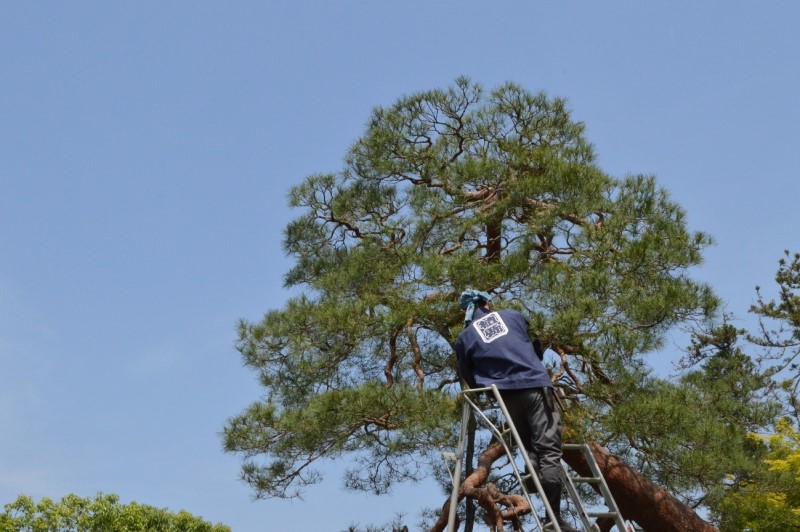Candling Murin-an’s Red Pine: The Quiet Communication Between Garden and Gardener
Monday, May 13th, 2019
Of the many enchanting scenes that Murin-an shows us, the scenery from its main house can be said to be the most important of all. Proudly standing in the center of that scenery is a lone red pine tree (known in Japanese as an akamatsu). This pine tree is positioned near the middle of a slightly elevated mound in the garden’s center and features an asymmetrical shape with tilting branches that hang prominently over the pond. Hence, regardless of whether seen from the main house or during a stroll through the garden, this pine tree plays the important role of creating a feeling of change in Murin-an’s scenery while also helping to maintain its overall balance. In this report, we introduce the finger pruning performed for this red pine’s candles on May 13 (Mon.). While candling is a necessary task for any garden pine, it is particularly essential to establishing this tree’s presence in Murin-an’s garden.

(The red pine seen from Murin-an’s main house)
Candling is a pruning technique that is mainly performed by hand to draw out the original beauty of a tree’s shape. Just like any other tree, every spring, pines shoot forth buds, upon which new needles grow and continue to grow until they become as large as their environment permits. In a garden, however, allowing such pines free reign to grow ever larger would result in that garden diverging from the original purpose behind its spatial composition and thus losing its meaning as a garden. This is even more so in the case of Murin-an, which as a cultural property of Japan, is designated a national Place of Scenic Beauty. It is therefore necessary that we foster Murin-an’s original scenery through the care we give its garden. Thus, the task of candling is both an act of adjusting the growth of a pine tree and also one of designing scenery.
So why does this work have to be performed by hand? We asked Murin-an’s head gardener, Kenta Deguchi.
Deguchi: In candling, we focus first on maintaining the tree’s shape. We draw out the soft look that only that red pine has. We then a set a scene where we can feel the scenery behind the red pine by allowing the background landscape to be seen through its branches. In the case of this pine, which occupies a relatively large place in the garden’s scenery, it needs to become an element that does not have an overbearing presence, but that rather conveys a sense of depth. It is also important that we do not forcibly sculpt the tree’s shape, but rather provide care for it that draws out the original beauty of its form. This means we have to observe the tree’s original shape closely and get as much information as we can from the tree in order to achieve a finely detailed balance. We do sometimes prune the trees with clippers. Fundamentally speaking, however, performing the work by hand so that we can actually touch the trees is more efficient.
It seems as though this is a form of garden care that adjusts tree branches to create something almost like a sculptural work of art. But why is candling performed during this time of the year?

(Murin-an’s head gardener: Kenta Deguchi)
Deguchi: Candling for red pines has to be done when new shoots are still soft and can be picked by hand. Otherwise, the candles gradually get harder and we would have to use clippers rather than our hands. As I said earlier, this work is hard to do using clippers, and pruning candles that have already grown large inevitably leaves branch tips with the slightly unnatural look of having been cut by human beings. For trees whose presence stand out in the garden, this has to be avoided.
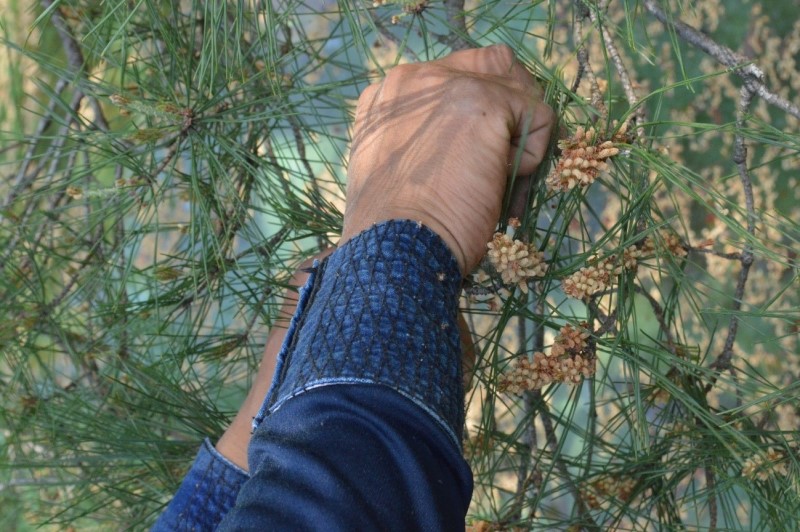
As this photograph shows, candling involves directly using one’s hands to remove candles and pine tree flowers. On first glance, it may not look that difficult. In fact, it is true that even beginners can easily participate in this work. Only an experienced gardener, however, can produce a finished look for a pine tree that takes into account its overall balance. Why?
As with any form of garden care, both design elements and speed are important. The nimble facility that comes with years of experience working in contact with trees can be said to be one of the factors behind the ability to work quickly without harming the pine candles. Observing the gardeners at work, one notices how they maintain the tree’s overall balance without ever climbing down in the middle of their work to check how it looks. Using their minds and physical sensations, they maintain a constant grasp over how their work is shaping the tree at any given time. It seems as though it is enough for them to check the tree with a quick upward glance when they climb down to take a break.
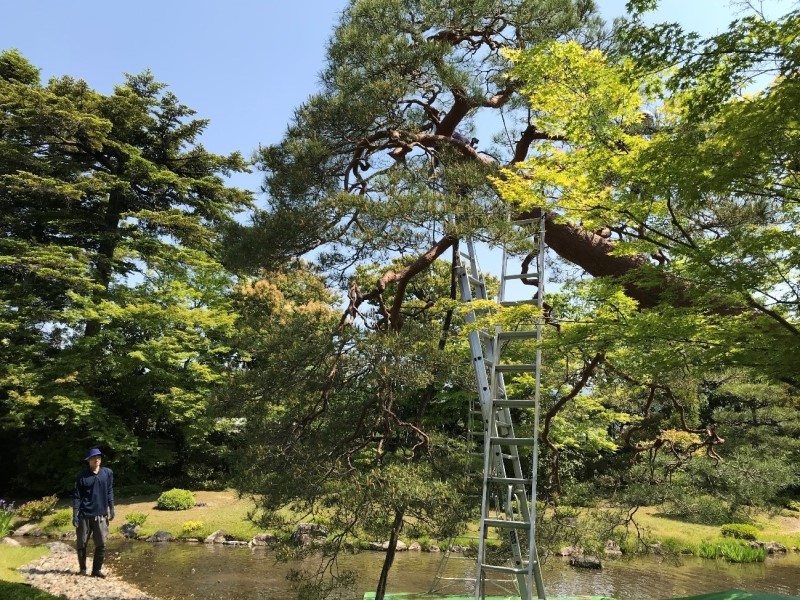
This is because a gardener “dialogues” with the tree by attuning his or her body to it. In other words, there is a kind of silent communication that exists between the garden tree and the gardener.
After the pine tree’s cylindrical flowers have been completely removed, all that remains is its pine needles pointing upwards. Thus, the tree’s branches gradually take on a beautiful appearance. In the case of non-flowering pine trees too, we prune candles that have grown up by referring to the tree’s overall feeling of balance.
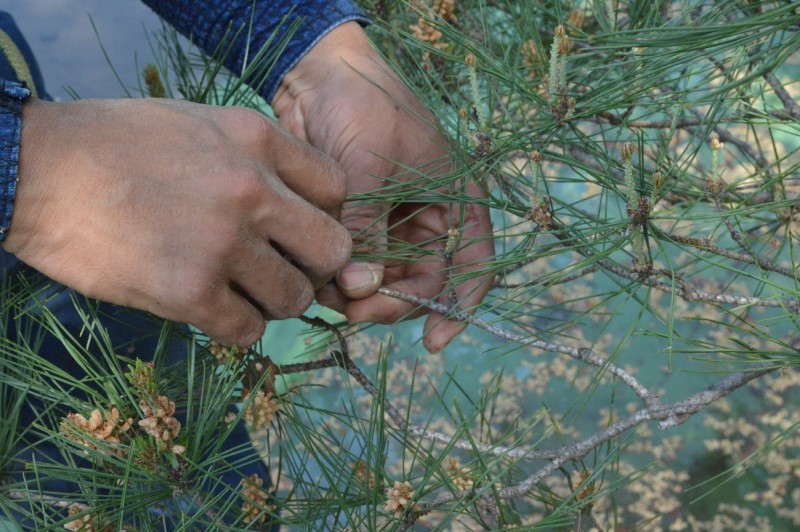
Moreover, because this work is performed with ladders and safety ropes to move gradually downward from the top of the tree, gardeners attune not only their hands, but their entire bodies to their work space. Notice how truly difficult it looks to do this work with sure and skillful hands while at the same time keeping one’s entire body balanced on either a ladder or the top of the tree trunk.
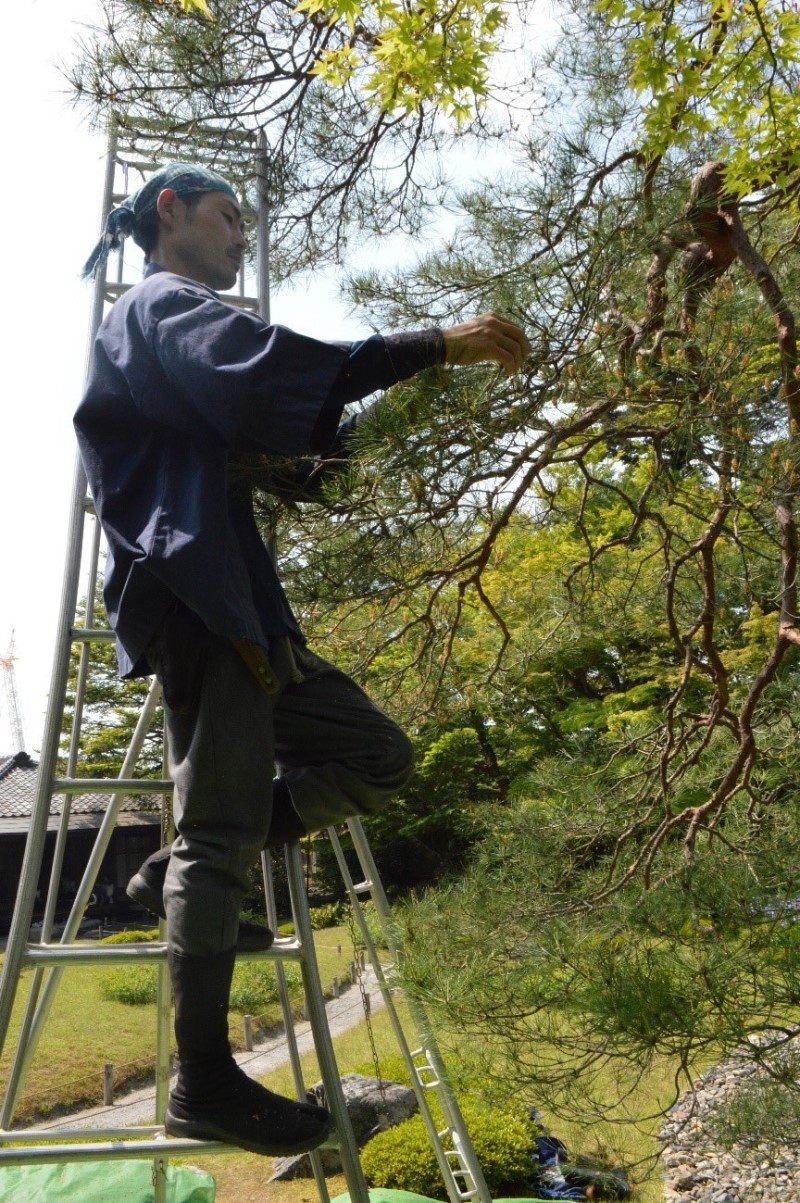
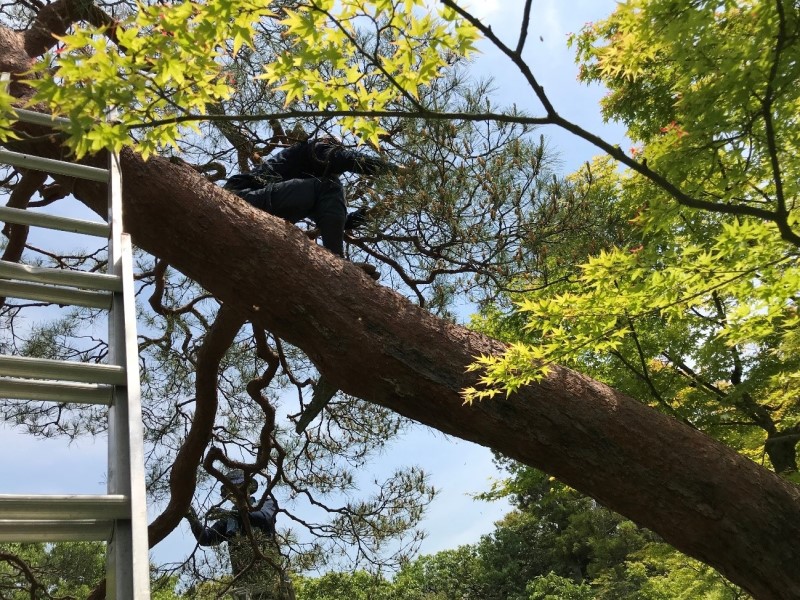
Perhaps it is by continually repeating this silent dialogue with garden trees that one develops into a fully mature gardener. Additionally, when multiple gardeners provide care for the same garden, they need to coordinate their work with one another. In addition to the silent dialogue with the garden tree, then, contact between colleagues now also becomes necessary.
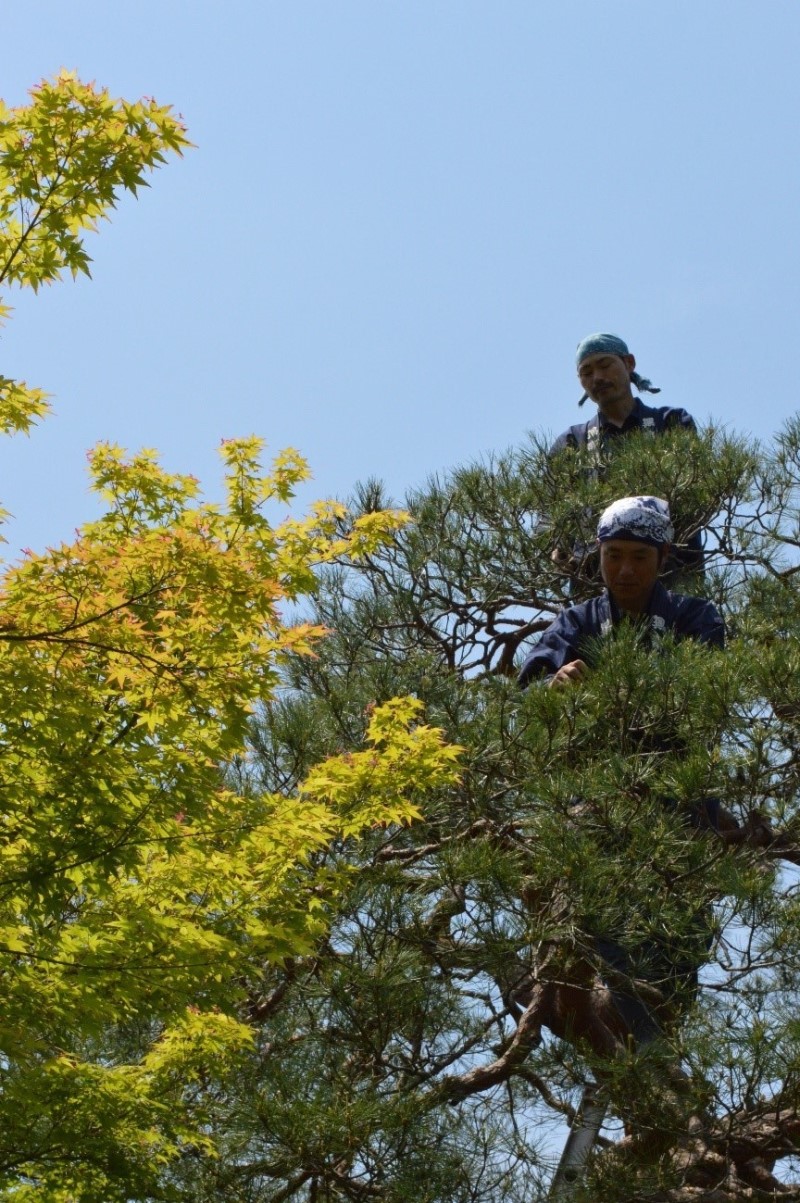
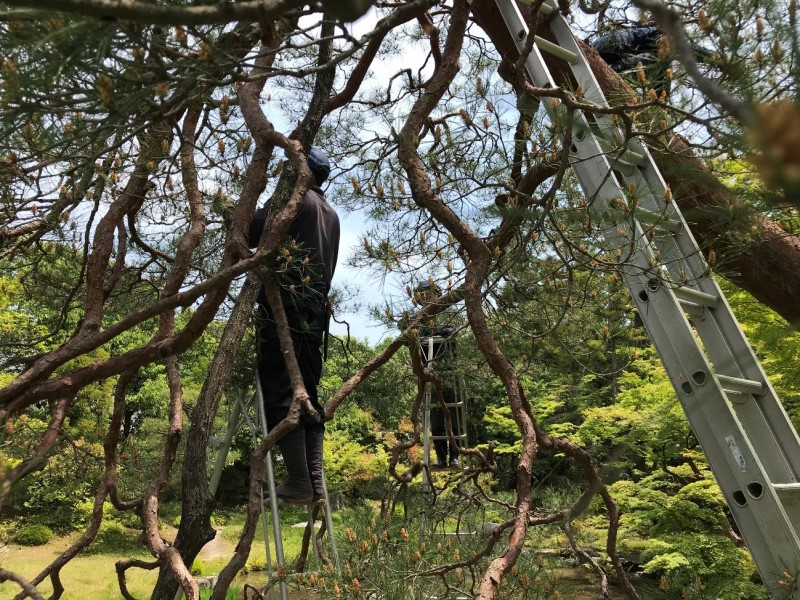
Through this candling process, the red pine that was heavily weighed down by pine tree flowers and newly grown candles, once again exhibits its soft original beauty and welcomes visitors to Murin-an.
When you visit Murin-an’s garden, try recalling this candling process and then take a long look at how this pine tree looks. You’ll be sure to see what it looks like when people exhaust the limits of their technique to draw out the beauty in nature.
